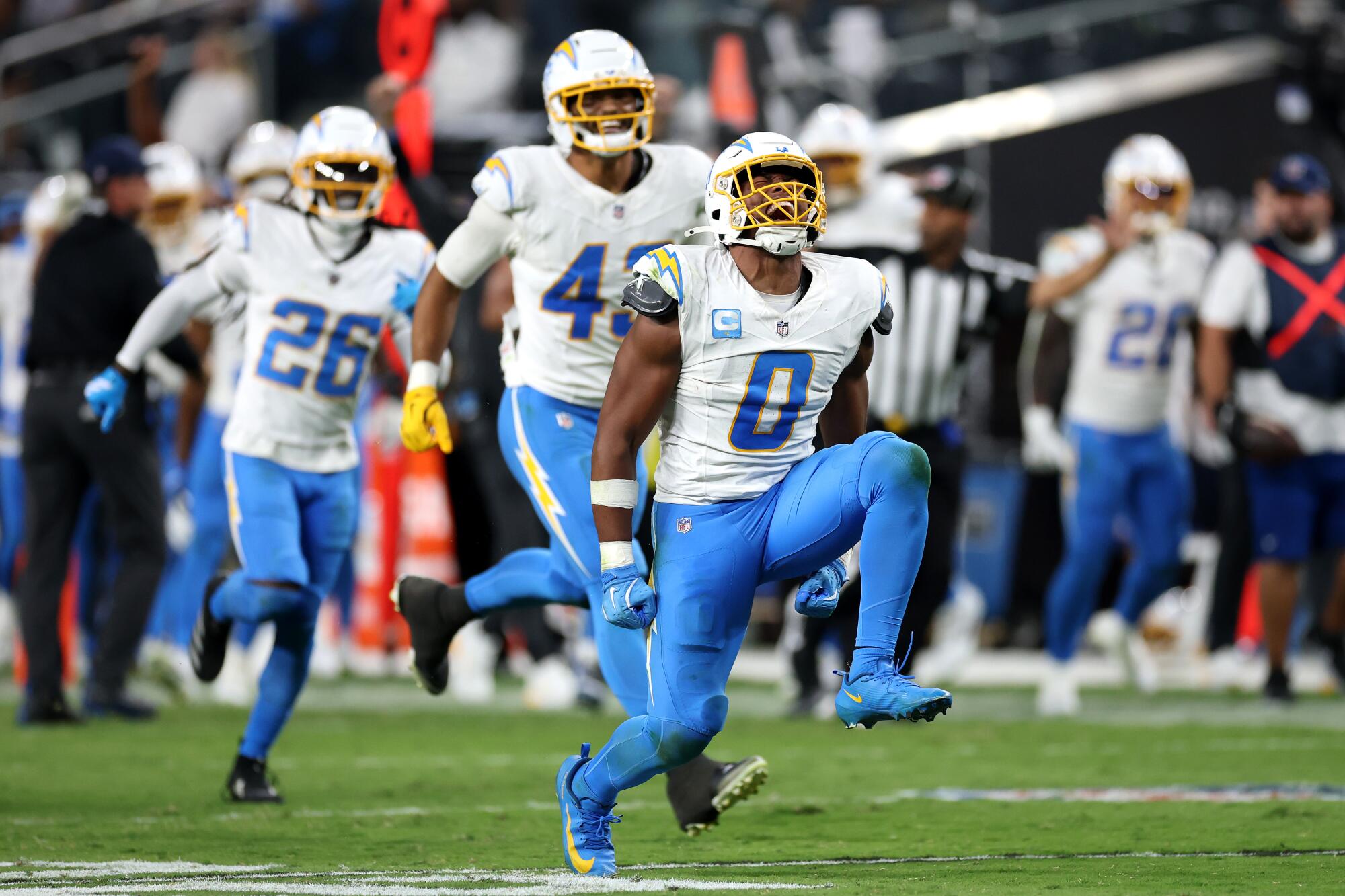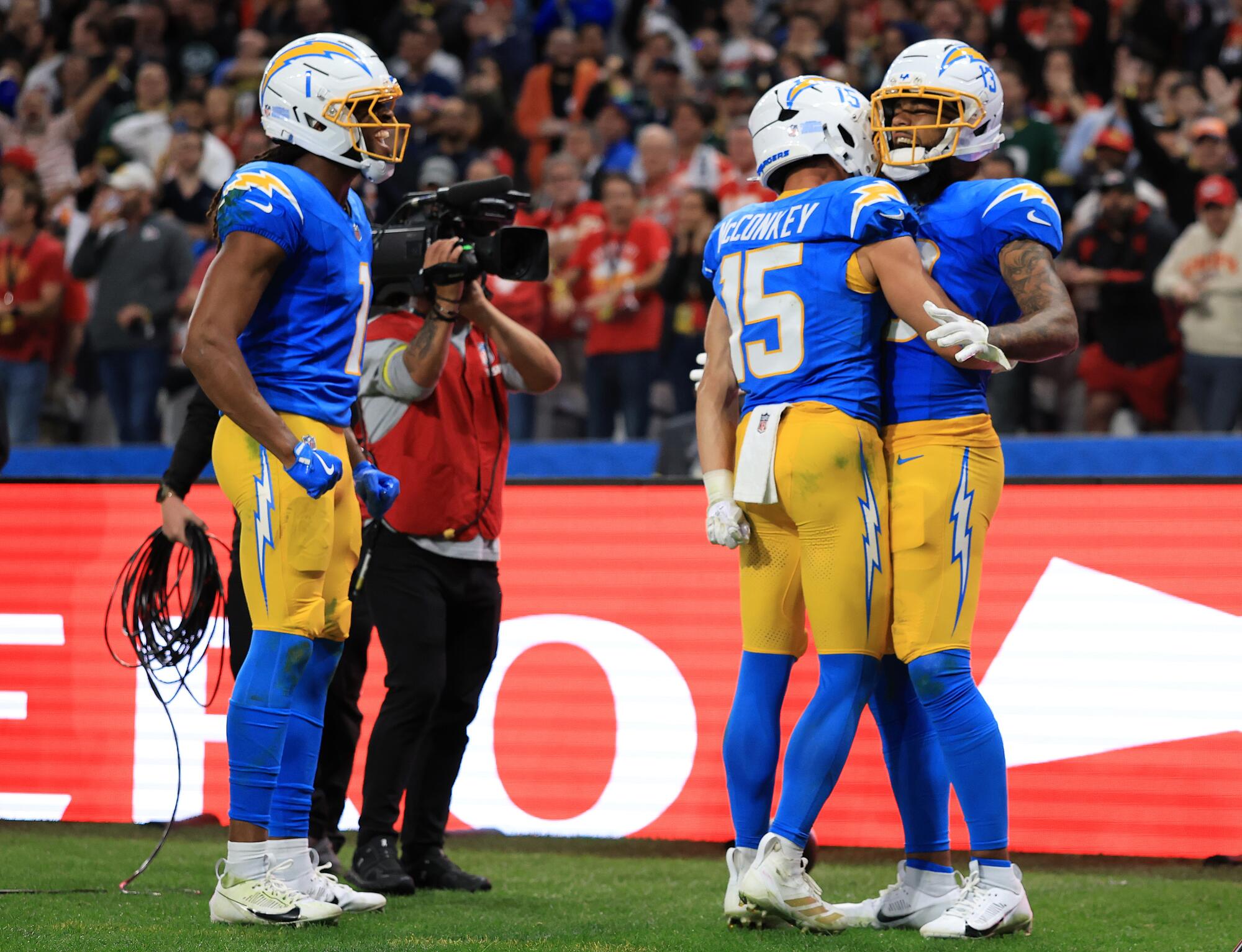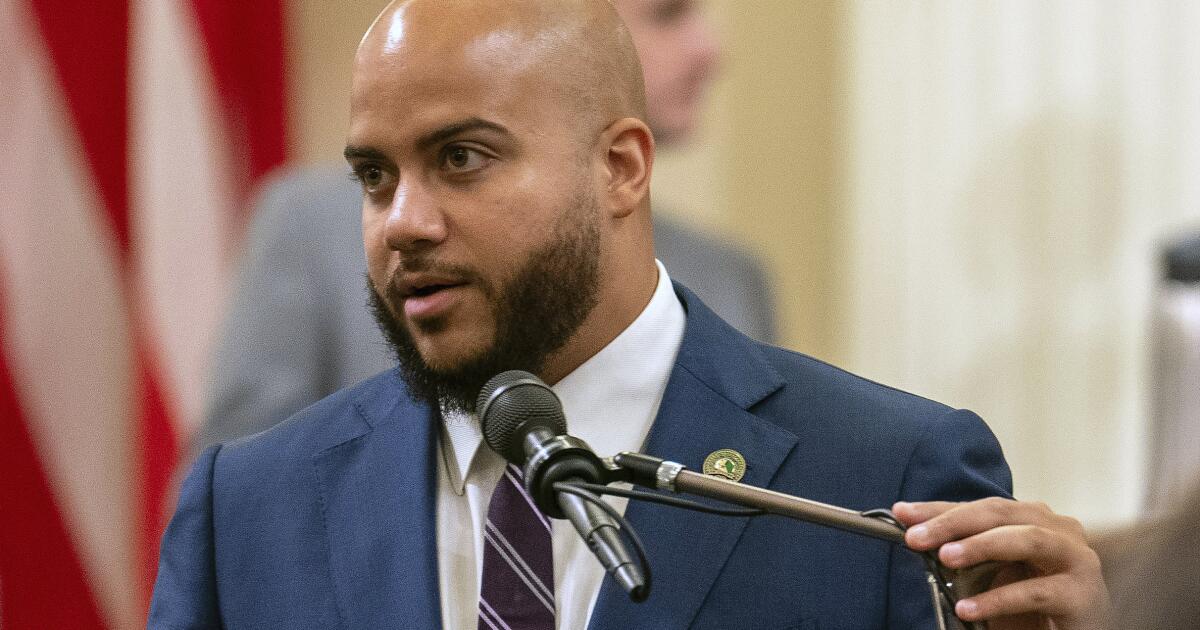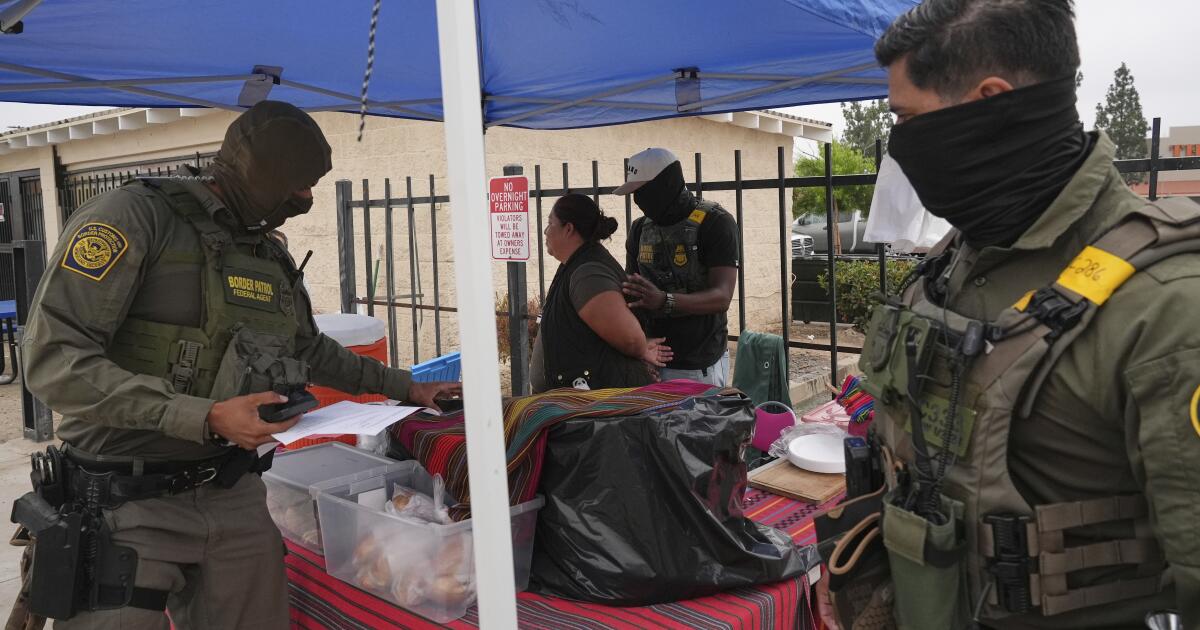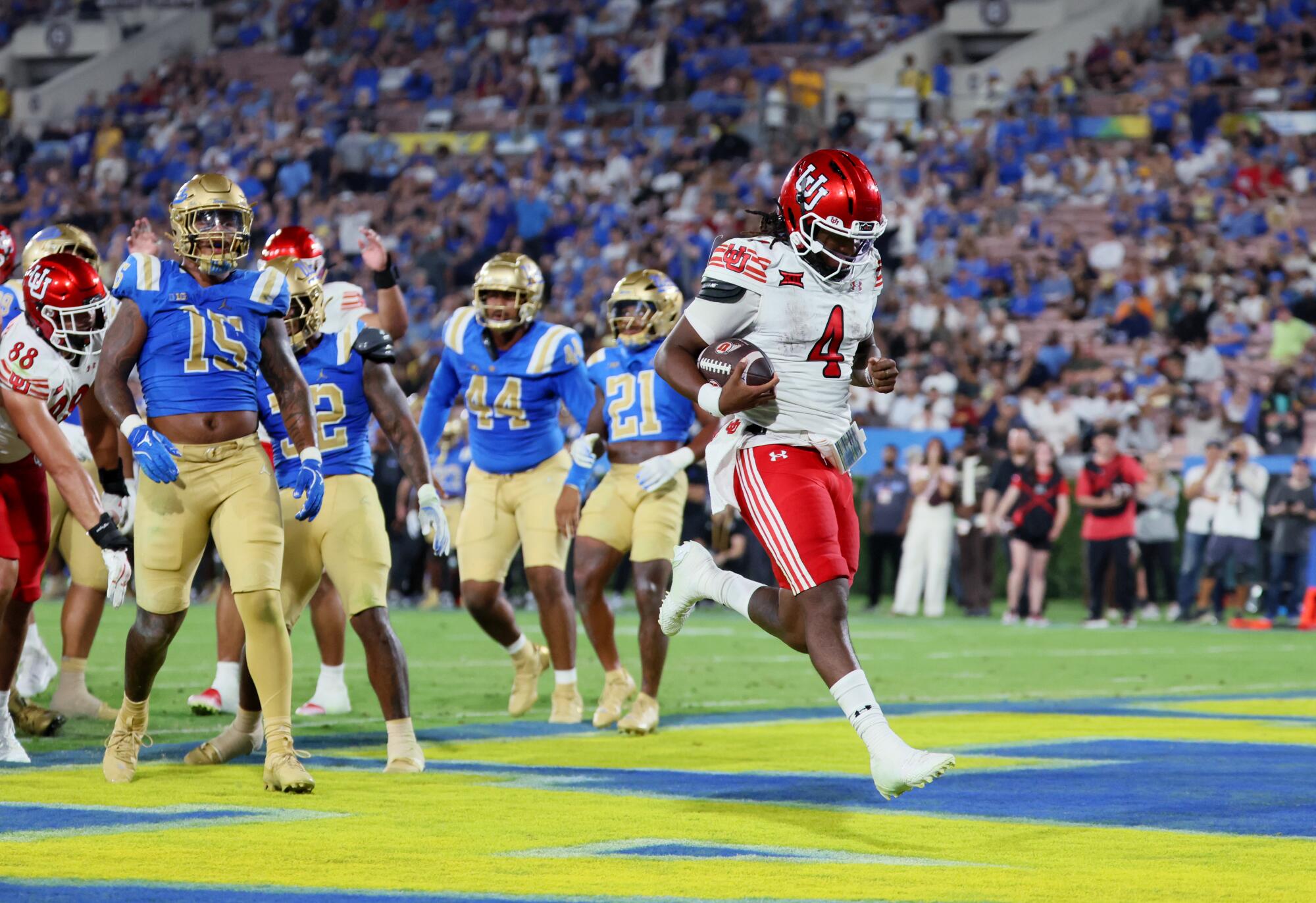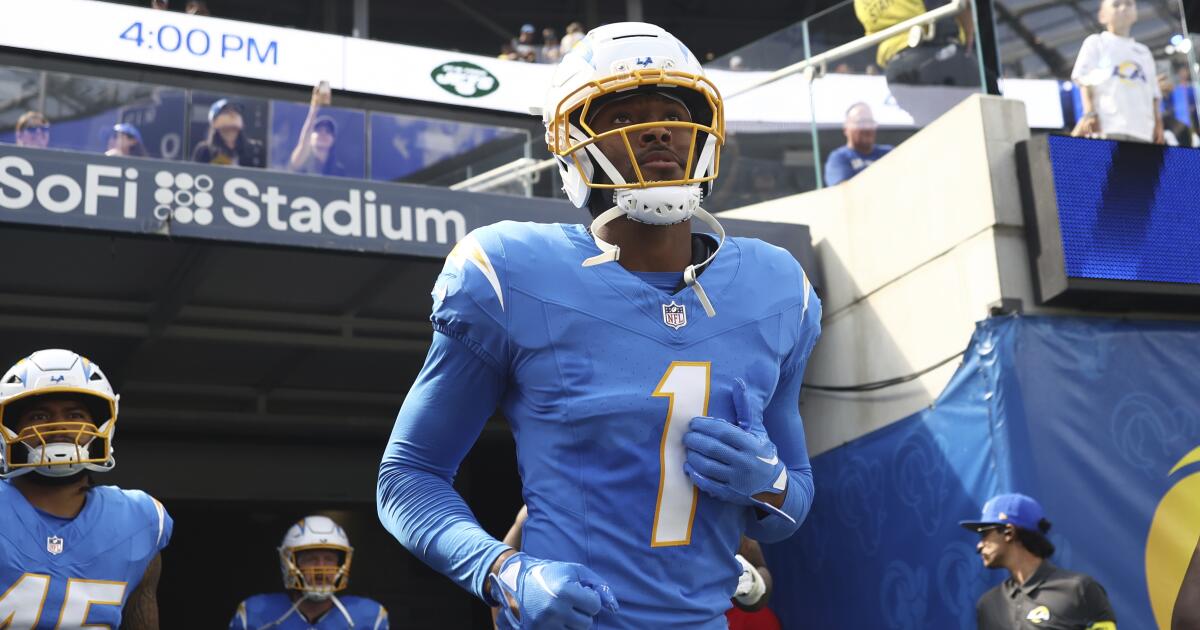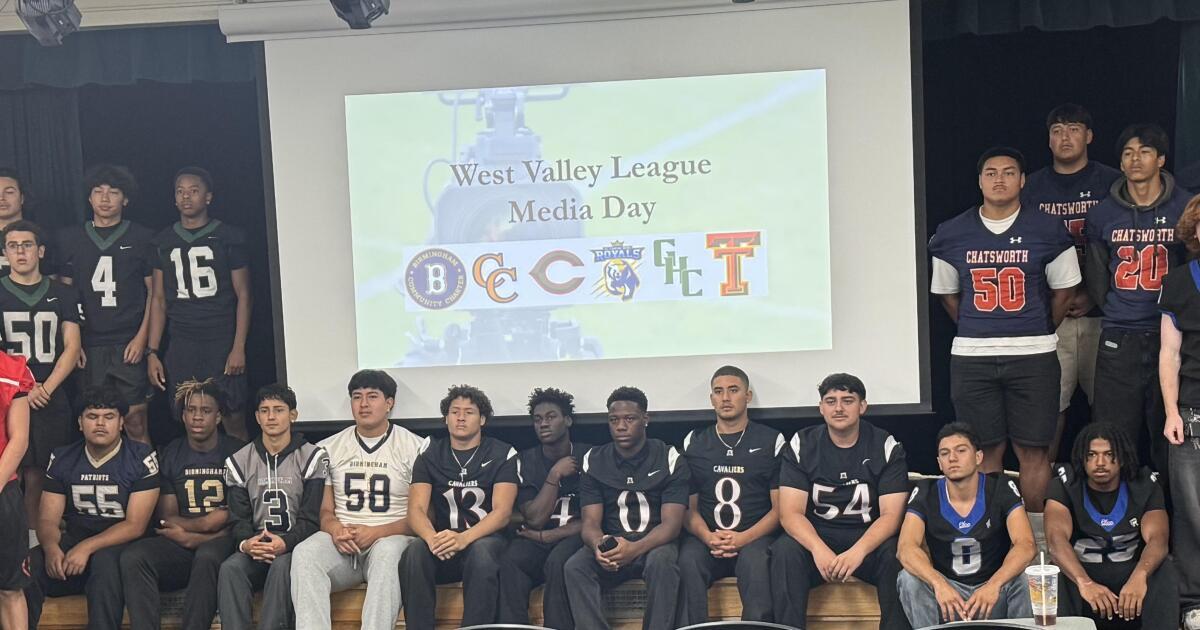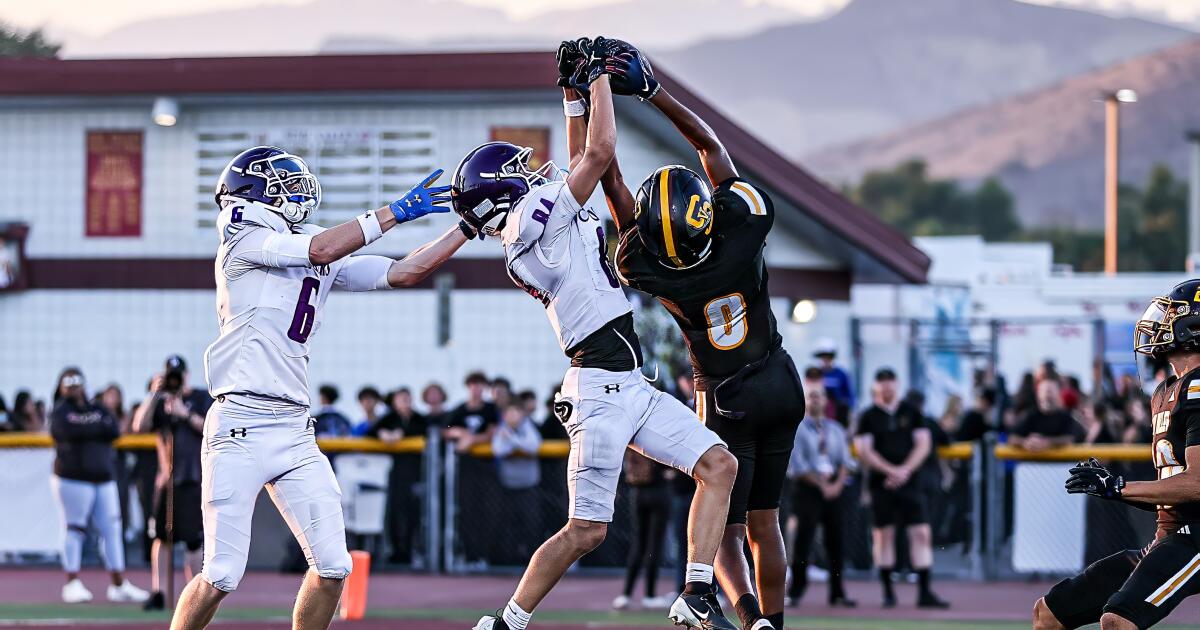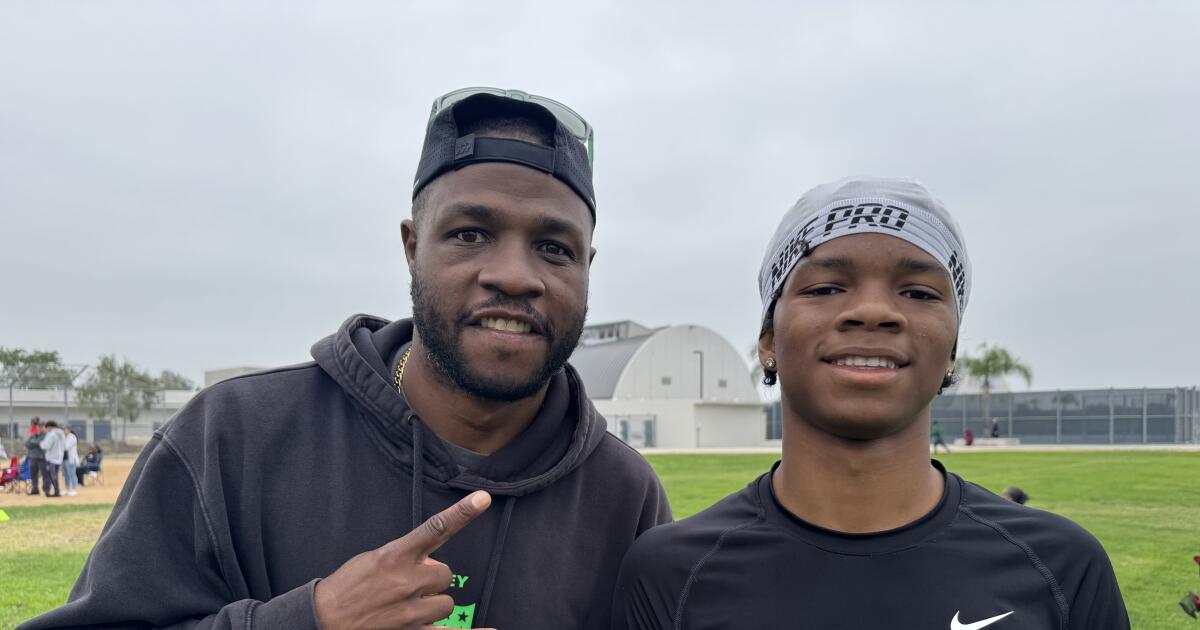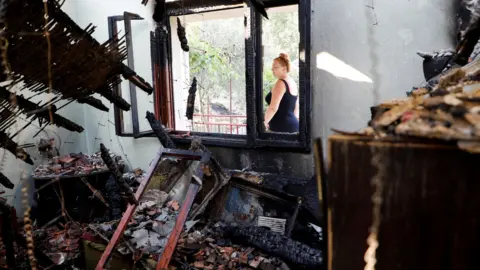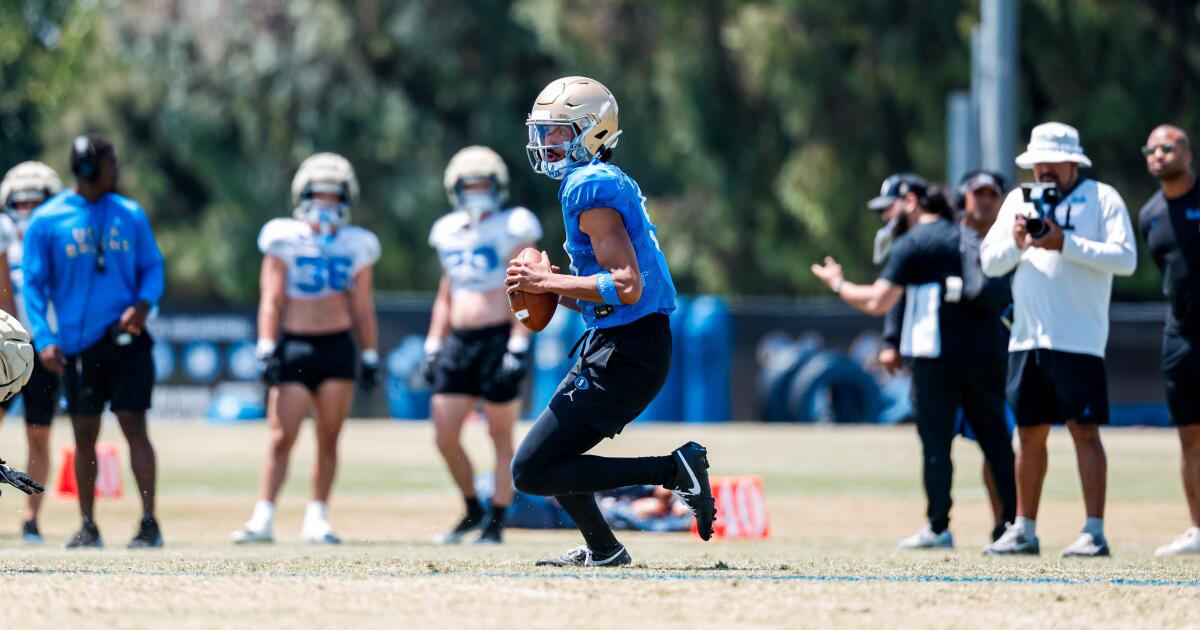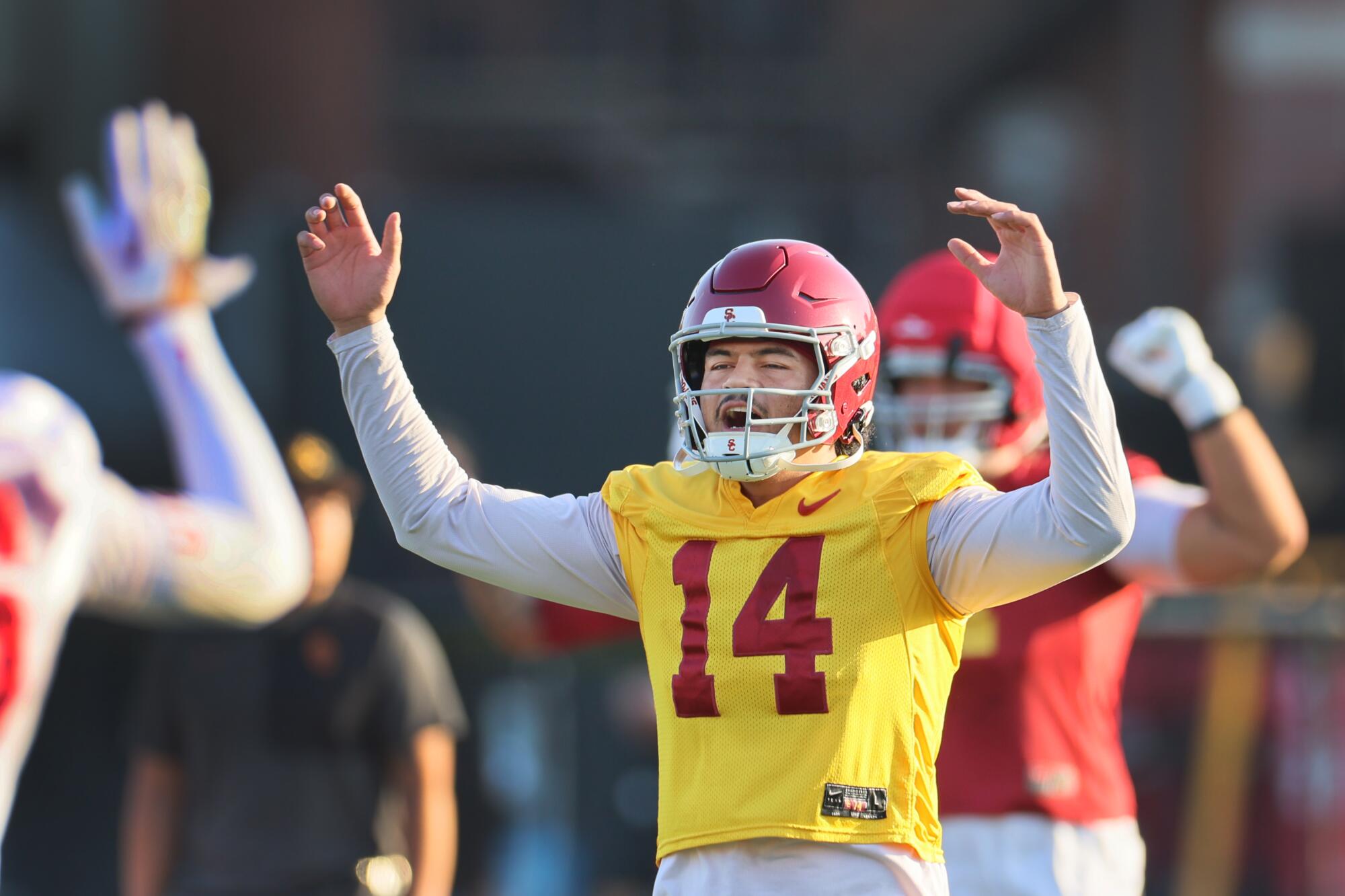Chargers’ masterful defensive performance carries them past Raiders
LAS VEGAS — Welcome to Allegiant Stadium.
Remember to tip your Raiders.
The Chargers didn’t forget. They were the most generous tippers in town Monday night, with eight different players swatting away a total of 15 passes and intercepting three more in a 20-9 victory over their AFC West rivals.
It was a defensive masterpiece, one accomplished without star edge rusher Khalil Mack, whose arm was crunched on a tackle, and with linebacker Daiyan Henley — who at times appeared launched from a Circus Circus cannon — on the mend from a nasty stomach bug.
“At times it felt like there were more than 11 out there, especially in the secondary,” Chargers coach Jim Harbaugh said.
Sometimes, a number is more than a number. For example, the Chargers are 2-0, but they’re even better than that because those two wins came against division opponents, counting the season-opening victory over Kansas City. The Chargers play their home opener Sunday against Denver with a chance to run the table on their first three of six division games.
Whereas quarterback Justin Herbert was in the spotlight in the win over the Chiefs, Monday’s game belonged to the defense — starting with Henley’s interception on the first play from scrimmage. He plucked a carom after teammate Alohi Gilman broke up Geno Smith’s first pass.
It was as if the supercharged stadium sprung a hissing leak.
“That’s deflating, bro,” Chargers safety Derwin James said. “It’s deflating to their coordinator — you’ve got your first 15 [plays] drawn up and the first play’s a pick? Very deflating.”
The play had the opposite effect on Henley, who felt so bad before the game his status was downgraded to questionable. He finished with a game-high 10 tackles and a sack.
“Saying I felt like crap is an understatement,” he said. “It was definitely a long game out there, but I got so much motivation just being part of this team, being with a group of guys that got my back no matter what.”
Chargers linebacker Daiyan Henley celebrates after sacking Raiders quarterback Geno Smith in the fourth quarter on Monday night.
(Sean M. Haffey / Getty Images)
Tony Jefferson had an interception for the Chargers at the end of the first half, and Donte Jackson had one in the end zone near game’s end.
Raiders quarterback Geno Smith was 0 for 11 on passes thrown 10 or more yards downfield, the second-most attempts without a completion since ESPN began tracking the statistic in 2006.
Harbaugh heaped praise on James, calling him “the best safety I’ve ever seen in the history of the National Football League” and “Superman.”
“He was playing at the line of scrimmage, intermediate, deep half, blitzing off the edge,” the coach said. “He can play nickel, dime backer, corner — he’s a five-tool, maybe six-tool player. You’d have to compare him to Willie Mays.”
The Raiders generated 218 yards of offense, 171 fewer than their performance at New England the week before.
“What that really feels like is a real missed opportunity just in general,” Raiders coach Pete Carroll said.
“We didn’t play well enough on the offensive side with the turnovers that add up. … They covered us up pretty good. I’m anxious to see the film.”
That won’t be the feel-good movie of the summer.
The Chargers, meanwhile, spiraled in all the right ways. Herbert threw a laser to Keenan Allen in the back of the end zone, and a pristine rainbow to Quentin Johnston for a 60-yard touchdown. He spun his passes with mechanical precision.
“The guy is exactly what we thought he was for a long time now,” Henley said of Herbert. “He’s been out there controlling and commanding the game, not just the offense, but commanding the game. When we give him the ball, we understand that we can rest knowing that [he] is going to get the job done.”
If this was a yardstick game, the visitors measured up and the Raiders took a ruler-rap across the knuckles, losing to the Chargers for the fourth time in the past five meetings.
Allegiant Stadium crackled with energy for this opener, with Raiders minority owner Tom Brady wearing headphones in the coaches’ box, Lil Jon performing at halftime, and two football rockstars roaming the sidelines — Harbaugh and Carroll — longstanding rivals since their days at Stanford and USC, and San Francisco and Seattle.
Carroll became the first person to coach an NFL game at age 74, and youthful as he is, the game had to sap his spirit a bit. The Chargers were in control throughout.
Chargers coach Jim Harbaugh and Raiders coach Pete Carroll shake hands after the Chargers’ win Monday.
(Sean M. Haffey / Getty Images)
Both teams are breaking in first-round running backs, rookies Omarion Hampton of the Chargers and Ashton Jeanty of the Raiders. Each made some impressive plays, yet neither was a true game-changer. Hampton absorbed a hit from Maxx Crosby and lost the ball on an exchange when the Chargers were trying to put the game on ice.
In the second half, the Raiders had a 19-play, 11-minute drive that resulted in a field goal, the crowd booing in frustration as the kicking unit ran onto the field. Like winning $5 on a $100 bet.
Two NFL teams have not allowed a first-half touchdown this young season: Green Bay and the Chargers.
Brady, a Fox NFL analyst on Sundays, was able to catch his team after working the Philadelphia-Kansas City game the night before.
He came a fairly long way, and his franchise has a fairly long way to go.
